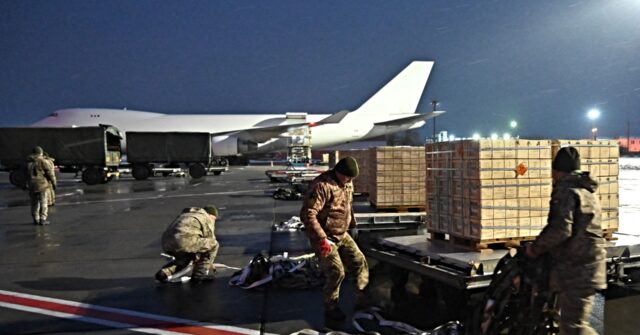As the Biden administration approaches its final days, the escalation of military support for Ukraine continues unabated, highlighted by a recent announcement of an additional $725 million in U.S. military assistance. This latest aid package, confirmed by the White House, comprises counter-drone systems and munitions to enhance Ukraine’s High Mobility Artillery Rocket System (HIMARS). Although it remains unclear whether the highly sought-after Army Tactical Missile System (ATACMS) is included in this package, Ukraine has been vocal about its need for longer-range capabilities to extend its reach into Russian territory and strike critical targets.
The U.S. continues to supply arms and military resources to Ukraine amid ongoing conflict with Russian forces, with this latest package also containing anti-personnel land mines. The inclusion of these mines is aimed at impeding ground advances from Russian and North Korean troops in strategic areas like Russia’s Kursk region. The U.S. has allocated billions of taxpayer dollars to bolster Ukraine’s defense capabilities, reaffirming a firm commitment from the Biden administration to maintain military assistance even during the transition to a new presidency.
President Joe Biden has expressed his determination to utilize all the military assistance funding approved by Congress for Ukraine before he steps down on January 20. The total amount of weaponry and military resources earmarked includes approximately $7.1 billion from the Pentagon’s stockpiles. This urgent effort to rapidly supply Ukraine with military equipment underscores the ongoing commitment of the U.S. to its ally in the face of Russian aggression.
Adding complexity to the situation, President-elect Donald Trump has signaled intentions to resolve the conflict as a high priority upon taking office, suggesting a significant policy shift may be on the horizon. This sentiment signifies a potential change in the dynamics of U.S. support for Ukraine, with concerns surrounding future military funding and aid versus negotiations or a push for peace under a Trump administration.
Amid these developments, Ukrainian President Volodymyr Zelensky has floated the idea that offering NATO membership to territories under Ukrainian control could help to put an end to the current phase of the war. This proposal not only reflects Kyiv’s long-standing aspirations to join NATO but also indicates a potential strategy to transition from active conflict to a diplomatic resolution. Such a move might necessitate careful consideration by NATO allies regarding security commitments and the implications of further Ukrainian integration.
Overall, the continuing flow of military assistance from the U.S. to Ukraine highlights the critical nature of the relationship between the two countries. As the Biden administration pushes to finalize its military commitments while Trump prepares for a possible change in U.S. foreign policy, the situation remains fluid and complex. The evolving landscape of international politics, defined by military aid, territorial ambitions, and strategic alliances, underscores the ongoing quest for stability in the region.

